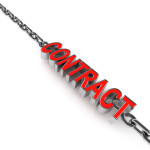 The topic of agency remuneration is one that the advertising industry has wrestled with for the last few decades, since the 15% standard agency commission went by the wayside.
The topic of agency remuneration is one that the advertising industry has wrestled with for the last few decades, since the 15% standard agency commission went by the wayside.
Agencies want to be paid fairly for their services and clients want to earn a fair return on their agency fee investment… at least theoretically. In reality, agencies want to earn as much money as possible on each of their accounts and clients want to pay as little in agency fees a they can.
Unfortunately, both stakeholder groups’ true intentions can at a minimum negatively impact perceptions one side may have of the other and in a worse case scenario, drive bad behavior. This can include an advertiser focusing on continually ratcheting down agency fees, with little consideration for the relationship between agency fees and the scope of services. In turn, this is a perfect breeding ground for an agency’s decision to pursue non-transparent revenue sources to shore up perceived inequities at the expense of the advertiser. Ultimately, these actions can serve to undermine trust and eventually the stability of the client/ agency relationship.
Thus the question remains; “How can both parties bridge the divide when it comes to the agency remuneration discussion?”
The best solution, obviously, would be to structure a compensation system which is fully transparent, fair to both parties, encourages good behavior and fosters a relationship based upon mutual respect and shared goals. As Sam Walton, founder of one of the world’s largest companies once said;
“We’re all working together; that’s the secret.”
In our experience as contract compliance auditors, we have found that the most effective compensation programs link to agency fees to outcomes. We have seen more beneficial results when this is the case compared to fixed retainer fees that have no link to a mutually agreed upon foundation. Typically, these outcomes fall into one of three categories:
- Agency deliverables
- Agency time-of-staff investment
- Qualitative and quantitative outcomes, those controlled/ influenced by the agency and KPIs tied to the success of the client in-market
It should be noted, that remuneration programs often combine elements from each of the aforementioned categories. In many respects, this is an ideal scenario, particularly in the context of agency-of-record relationships, where the nature of the client/ agency relationship is more akin to a partnership than a buyer/ vendor interaction.
Regardless of the mode of compensation ultimately selected, value-based, direct-labor driven or performance based, we believe that there are two critical components, which must be negotiated in advance of focusing on the level of remuneration.
First and foremost is the development of a tight scope-of-work (SOW) collaboratively constructed by the client-side marketing team and the agency account services team. At a minimum, the SOW should explicitly identify all projects, expected outputs, the quantity and timing of those outputs and some indication of whether those items must be created versus modified or adapted. Ideally, the SOW will also address issues with regard to project component complexity and the number of rounds of input/ review per project component to assist the agency in assessing the required time-on-task and to assist the client in establishing project briefing and approval processes which are consistent with desired project outputs.
Secondly, with a mutually agreed upon SOW, the agency should be asked to provide a detailed staffing plan, one which identifies the names, titles and functional responsibilities of the specific individuals who will work on the business along with their utilization rates. The staffing plan should also identify the base number of hours utilized to calculate a full-time equivalent (i.e. 1,800 hours per year) and at a minimum, a blended hourly rate by department or by function for use in pricing out-of-scope work and or in reconciling fees relative to the agency’s time-of-staff investment if and when necessary.
The time invested by both parties on the front-end to clearly establish the client’s desired outputs, timing requirements and qualitative expectations and to assess the resource investment required by the agency to deliver on those anticipated outcomes will yield significant dividends.
Additionally, tracking monthly progress project status and the agency’s time-of-staff investment will allow both parties to stay on track and within budget… while eliminating any surprises.
In the words of Henry Ford; “Coming together is a beginning; keeping together is progress; working together is success.”
